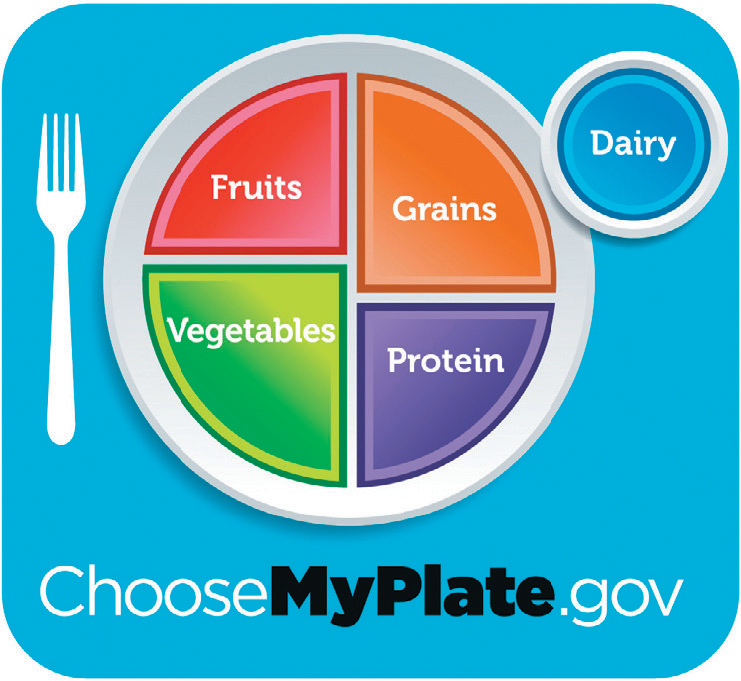
Remember being taught about the Food Pyramid? Fats and oils were at the top, and you were encouraged to eat these sparingly. Milk, dairy and proteins were in the second level, and the recommendation was to eat two to three servings each day. Vegetables, three to five servings a day, and fruits, two to four servings a day, were represented on the next level down. And the foundation of this type of healthy diet was built on bread, cereals, rice and pasta.
Things have changed. About a decade ago, the U.S. Department of Agriculture (USDA) created “My Plate,” and the nutrition world was turned upside down.
According to the USDA, My Plate’s three goals were balancing calories, eating more fruits and vegetables, and decreasing sodium and processed foods. The program also promotes drinking more water instead of sugary drinks.
My Plate is based on this visual:
- One-fourth of the plate should be protein.
- One-fourth should be whole grains.
- One-half should be a combination of fruits and vegetables.
- A glass of milk on the side represents the inclusion of dairy in your daily diet.
These days, My Plate is being taught in schools and has replaced the age-old Food Pyramid. For more information, guidelines and recipes, visit myplate.gov.
How to kick sugar cravings
Here are a few of Weddle’s suggestions for addressing sugar cravings:
Take a teaspoon of coconut oil.
Drink 2 tablespoons of apple cider vinegar in a 6- to 8-ounce glass of water once a day.
Make a protein smoothie: Combine 25–40 grams of protein powder, 1 tablespoon of ground flax or chia seeds, and ½ teaspoon of cinnamon; blend with unsweetened coconut or almond milk and ice.
Try a daily detox drink:
- 8 to 12 ounces hot water
- 2 tablespoons organic apple cider vinegar
- 2 tablespoons lemon juice
- ½ to 1 teaspoon ground ginger
- Pinch of cayenne pepper
- Liquid stevia to taste


